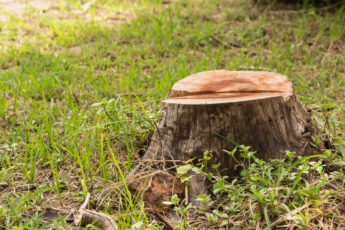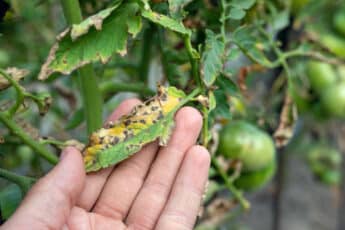Plants, like all living organisms, are susceptible to stress. Plant stress can be caused by various factors, with pests and diseases being among the most significant. Recognizing early signs of plant stress is crucial for effective management and intervention.
As new gardeners, we must learn to look for the source of pest and disease attacks on our plants to treat the problem causing DIFFICULTY or stressful situations rather than spraying poisons year after year to treat symptoms without ever addressing the root cause. This article aims to provide a comprehensive guide on identifying the early signs of plant stress caused by pests and diseases, helping gardeners and farmers promptly protect their crops.
Understanding Plant Stress
Stress can disturb all living things. Plant stress is any adverse condition that may disrupt a plant’s development, health, or productivity. It can be caused by abiotic factors such as drought, poor soil, harsh temperatures, and biotic factors such as pests and diseases. Early recognition of stress signals is critical to limiting harm and promoting recovery.
General Symptoms of Plant Stress
Wilting and Yellowing
- Wilting: Even with adequate water, plants may wilt due to root damage or blocked vascular systems caused by pests or pathogens.
- Yellowing (Chlorosis): When leaves turn yellow, it often indicates nutrient deficiencies, root damage, or the presence of certain pests like aphids.
Stunted Growth
Plants growing slowly or with distorted shapes may suffer from root-knot nematodes, fungal infections, or viral diseases.
Leaf Spots and Blotches
Irregular spots or blotches on leaves can be a sign of fungal, bacterial, or viral infections. Common examples include:
- Black Spot: Typically seen on roses, caused by the fungus Diplocarpon rosae.
- Rust: Presents as orange or brown pustules on the underside of leaves.
Leaf Curling and Distortion
Leaves that curl, crinkle, or become distorted often indicate pest infestations, such as aphids, thrips, or viral infections like the tomato mosaic virus.
Holes and Chewed Leaves
Visible leaf damage, such as holes or chewed edges, usually points to insect pests like caterpillars, beetles, or slugs.
Specific Signs of Pest Infestation
Aphids
- Signs: sticky honeydew on leaves, sooty mould, curled or distorted leaves, and clusters of small, soft-bodied insects on new growth.
- Impact: Aphids feed on plant sap, causing reduced growth and vigor, and they can also transmit viruses.
Spider Mites
- Signs: Fine webbing on the undersides of leaves, tiny yellow or white speckles on leaves, and overall leaf discoloration.
- Impact: Spider mites suck plant juices, leading to leaf drop and weakened plants.
Caterpillars and Beetles
- Signs: Large, irregular holes in leaves, chewed edges, and frass (insect droppings).
- Impact: These pests can defoliate plants rapidly, affecting photosynthesis and plant health.
Root-Knot Nematodes
- Signs: Galls or swellings on roots, yellowing and stunted growth, wilting even with adequate water.
- Impact: Nematodes damage roots, impairing water and nutrient uptake, leading to poor plant health.
Specific Signs of Disease
Fungal Infections
- Powdery Mildew: White or grey powdery growth on leaves and stems.
- Downy Mildew: Yellow or white patches on the upper leaf surface and a downy growth on the underside.
- Impact: These fungi reduce photosynthesis, weakening the plant and reducing yields.
Bacterial Infections
- Bacterial Leaf Spot: Water-soaked spots that become necrotic, often with a yellow halo.
- Fire Blight: Blackened, wilting branches, often in a shepherd’s crook shape, commonly affect apple and pear trees.
- Impact: Bacterial infections can spread rapidly, leading to severe plant damage or death.
Viral Diseases
- Mosaic Virus: Mottled light and dark green patterns on leaves, distorted growth.
- Tomato Spotted Wilt Virus: Bronze or dark spots on leaves, stunted growth.
- Impact: Viruses often lead to reduced plant vigor, malformed fruits, and lower yields.
Diagnostic Tools and Methods
Visual Inspection
Regularly examine plants for the early signs mentioned. Pay attention to the undersides of leaves and new growth.
Magnification Tools
Use a magnifying glass or a hand lens to inspect for tiny pests like spider mites and aphids.
Soil Testing
Conduct soil tests to check for nutrient deficiencies or imbalances that may predispose plants to stress.
Laboratory Analysis
Send plant samples to a laboratory to accurately diagnose diseases, particularly viral infections, which can be hard to distinguish visually.
Diagnostic Kits
Use commercially available diagnostic kits to detect specific pathogens, such as fungi and bacteria.
Management Strategies
Cultural Practices
- Crop Rotation: Prevents the build-up of soil-borne pests and diseases.
- Proper Spacing: Ensures good air circulation, reducing the risk of fungal infections.
- Sanitation: Remove and destroy infected plant material to prevent the spread of pathogens.
Biological Controls
- Beneficial Insects: Introduce natural predators like ladybugs for aphid control.
- Nematodes: Use beneficial nematodes like root-knot nematodes to control soil pests.
Chemical Controls
- Insecticides: Use as a last resort, selecting targeted, environmentally friendly options.
- Fungicides and Bactericides: Apply according to label instructions, targeting specific pathogens.
Resistant Varieties
Plant disease-resistant or pest-resistant varieties to reduce the risk of severe infestations or infections. These are some tips and tricks to recognize and fight plant stress-causing factors.
FAQs
Q1: How can I tell if my plant is stressed due to pests or diseases?
A: Look for symptoms such as discoloration, wilting, leaf deformation, stunted growth, visible pests, or fungal growth. Each symptom can give clues about the underlying issue.
Q2: Can environmental factors also cause plant stress?
A: Yes, environmental factors such as extreme temperatures, poor soil conditions, and improper watering can also cause plant stress, often mimicking the symptoms of pest or disease damage.
Q3: What should I do if I find pests on my plants?
A: Identify the type of pest and choose an appropriate control method, which could include biological controls, organic treatments, or chemical insecticides.
Q4: How can I prevent plant diseases?
A: To minimise the risk of fungal and bacterial diseases, use resistant plant varieties, practice crop rotation, ensure good air circulation, and avoid overhead watering.
Q5: Are there natural remedies for treating plant diseases?
A: Yes, natural remedies include neem oil, baking soda solutions, and garlic sprays, which can be effective against various plant diseases.
Q6: How often should I inspect my plants for signs of stress?
A: Regular inspection, ideally once a week, helps detect issues early, allowing for timely intervention and preventing widespread damage.
Conclusion
Stress can affect all organisms. Plants are super sensitive to stress. Recognising the early signs of plant stress due to pests and diseases is vital for maintaining healthy and productive plants. By knowing all disease-causing factors and applying proactive measures, gardeners and farmers can effectively manage these threats and ensure the vitality of their crops. Regular monitoring, good cultural practices, and timely interventions are the cornerstone of successful plant stress management.
If you notice any changes in your plants and do not recognize them, count on Greenwood Tree Company for assistance. We would love to hear from you!







